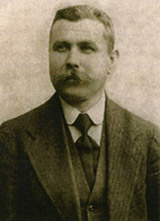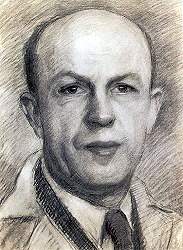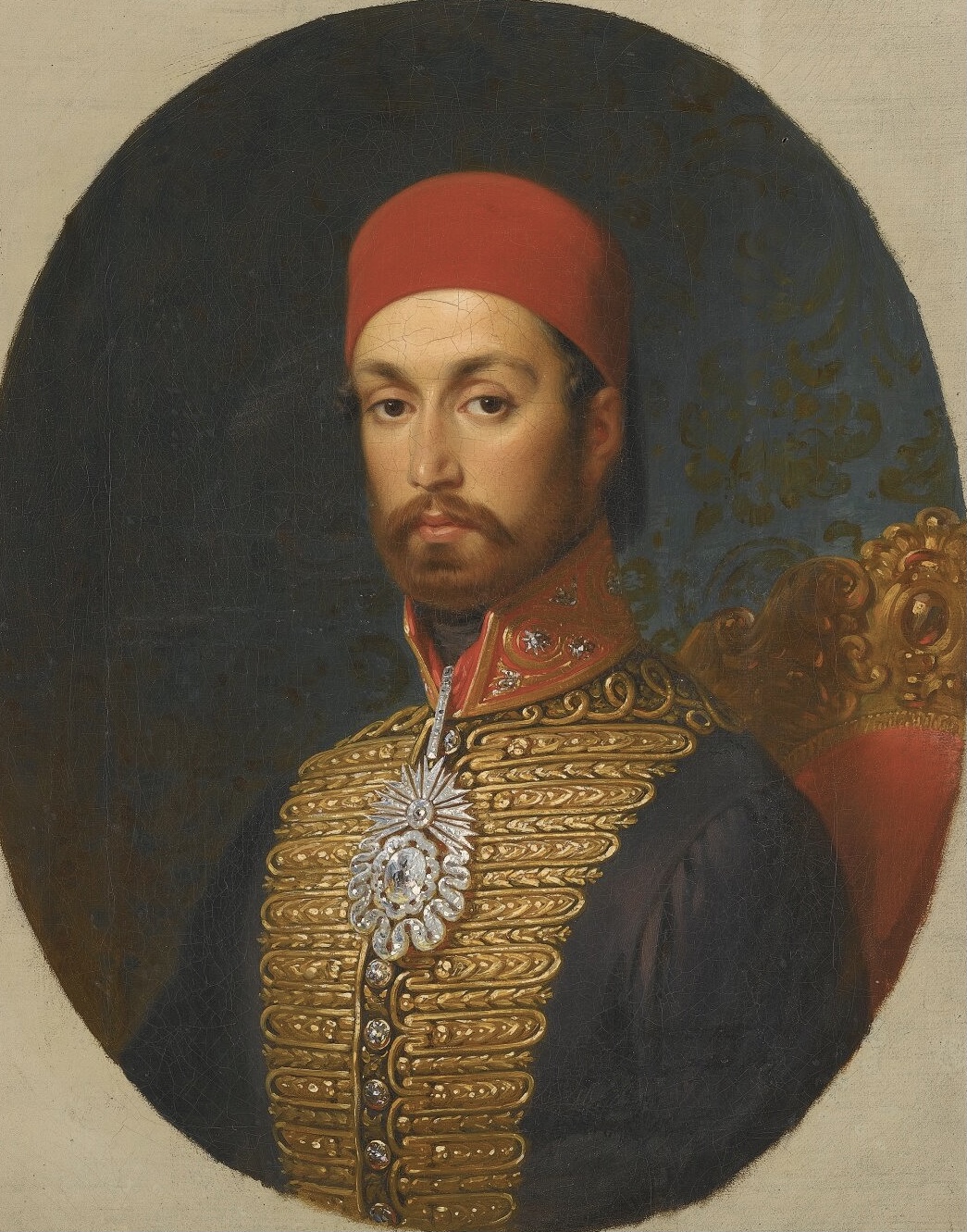|
List Of Turkish Painters
The history of modern Turkish painting can be traced back to the modernization efforts in the Ottoman Empire during the Tanzimat period, in the 19th century. This article contains a brief history of Turkish painters and art movements from the mid-19th century to the present. Mid-19th century to early 20th century Turkish painting, in the Western sense, developed actively starting from the mid-19th century. * Ferik İbrahim Paşa (1815–1891) * Osman Nuri Paşa (c.1839–1906) * Osman Hamdi Bey (1842–1910) * Şeker Ahmet Paşa (1841–1907) * Halil Paşa (c.1857–1939) * Hoca Ali Riza (1864–1939) The very first painting lessons were scheduled at the Mühendishane-i Berri-i Humayun (Military School of Engineering) in 1793 mostly for technical purposes. Artists who formed the 19th-century art milieu were often from Ottoman military schools. Additionally, local Christian and "Levantine" artists, as well as foreign painters who lived in Istanbul and other parts of th ... [...More Info...] [...Related Items...] OR: [Wikipedia] [Google] [Baidu] |
Ottoman Empire
The Ottoman Empire (), also called the Turkish Empire, was an empire, imperial realm that controlled much of Southeast Europe, West Asia, and North Africa from the 14th to early 20th centuries; it also controlled parts of southeastern Central Europe, between the early 16th and early 18th centuries. The empire emerged from a Anatolian beyliks, ''beylik'', or principality, founded in northwestern Anatolia in by the Turkoman (ethnonym), Turkoman tribal leader Osman I. His successors Ottoman wars in Europe, conquered much of Anatolia and expanded into the Balkans by the mid-14th century, transforming their petty kingdom into a transcontinental empire. The Ottomans ended the Byzantine Empire with the Fall of Constantinople, conquest of Constantinople in 1453 by Mehmed II. With its capital at History of Istanbul#Ottoman Empire, Constantinople (modern-day Istanbul) and control over a significant portion of the Mediterranean Basin, the Ottoman Empire was at the centre of interacti ... [...More Info...] [...Related Items...] OR: [Wikipedia] [Google] [Baidu] |
Ahmet Ziya Akbulut
Ahmet Ziya Akbulut (27 June 1869, Constantinople - 17 April 1938, Istanbul) was a Turkish landscape and architectural painter. Biography He attended Kuleli Military High School, then went to the Turkish Military Academy and studied art with Osman Nuri Pasha. After graduating, he was assigned to the Ottoman Military College The Ottoman Military College or Imperial Military Staff College or Ottoman Army War College ( or ), was a two-year military staff college of the Ottoman Empire. It was located in İstanbul. Its mission was to educate staff officers for the Ott ..., where he worked until 1894, when he was promoted to captain and transferred to Kuleli. In addition to the arts, he was well-versed in astronomy and mathematics. He used these skills to introduce more perspective into his work; something which was not a major part of traditional Turkish art. He also wrote a manual on the construction of sundials (''Güneş Saatleri Yapım Kılavuzu''), which was republished in ... [...More Info...] [...Related Items...] OR: [Wikipedia] [Google] [Baidu] |
Cubism
Cubism is an early-20th-century avant-garde art movement which began in Paris. It revolutionized painting and the visual arts, and sparked artistic innovations in music, ballet, literature, and architecture. Cubist subjects are analyzed, broken up, and reassembled in an abstract form. Instead of depicting objects from a single perspective, the artist depicts the subject from multiple perspectives to represent the subject in a greater context. Cubism has been considered the most influential art movement of the 20th century. The term ''cubism'' is broadly associated with a variety of artworks produced in Paris (Montmartre and Montparnasse) or near Paris (Puteaux) during the 1910s and throughout the 1920s. The movement was pioneered in partnership by Pablo Picasso and Georges Braque, and joined by Jean Metzinger, Albert Gleizes, Robert Delaunay, Henri Le Fauconnier, Juan Gris, and Fernand Léger. One primary influence that led to Cubism was the representation of three-dimensional ... [...More Info...] [...Related Items...] OR: [Wikipedia] [Google] [Baidu] |
Fauvism
Fauvism ( ) is a style of painting and an art movement that emerged in France at the beginning of the 20th century. It was the style of (, ''the wild beasts''), a group of modern artists whose works emphasized painterly qualities and strong colour over the representational or realistic values retained by Impressionism. While Fauvism as a style began around 1904 and continued beyond 1910, the movement as such lasted only a few years, 1905–1908, and had three exhibitions. John Elderfield, The ''"Wild Beasts" Fauvism and Its Affinities,'' 1976, Museum of Modern Art, p.13, The leaders of the movement were André Derain and Henri Matisse. Artists and style Besides Matisse and Derain, other artists included Robert Deborne, Albert Marquet, Charles Camoin, Bela Czobel, Louis Valtat, Jean Puy, Maurice de Vlaminck, Henri Manguin, Raoul Dufy, Othon Friesz, Adolphe Wansart, Georges Rouault, Jean Metzinger, Kees van Dongen, Émilie Charmy and Georges Braque (subsequently ... [...More Info...] [...Related Items...] OR: [Wikipedia] [Google] [Baidu] |
İbrahim Çallı
İbrahim Çallı (13 July 1882 – 22 May 1960), popularly known as Çallı İbrahim, was a Turkish painter and educator. He was a founding members of the Society of Ottoman Painters. He trained many young painters as a professor at Mimar Sinan Fine Arts University (formerly Academy of Fine Arts, Istanbul) and they were called the ''1914 Generation'' of artists, is also known as the ''Çallı Generation''. Biography İbrahim Çallı was born on 13 July 1882 in Çal, Denizli. He showed early interest in painting during his primary and secondary education which he finished in his hometown and in İzmir. In 1899 he went to Istanbul where he worked in several jobs while he continued painting. Meanwhile, he took drawing lessons from an Armenian-origin Ottoman painter Roben Efendi at the Grand Bazaar. With the support of Şeker Ahmet Paşa he entered the Mimar Sinan Fine Arts University (formerly Academy of Fine Arts, Istanbul) in 1906. At the Academy of Fine Arts, Istanbul he stu ... [...More Info...] [...Related Items...] OR: [Wikipedia] [Google] [Baidu] |
Hüseyin Avni Lifij
Hüseyin Avni Lifij (1886, Ladik - 2 June 1927, Istanbul) was a Turkish impressionist painter of Circassians, Circassian origin. He is best known for landscapes with architectural features. Biography His family emigrated from Sochi to Ladik during the Great Circassian exile of 1864.''Avni Lifij Sanat Yazıları.(2019). Kırmızı Kedi Yayınevi.'' He began his education in 1896, in Istanbul; showing special interest in the art and music classes. In 1898, he continued his studies at the "Numune-i Terakki Mektebi", a private school where he learned French. Three years later, he obtained a position in the Railways Department of the "Ottoman Ministry of Public Works".Chronology @ the Avni Lifij website. While there, he continued taking lessons to improve his French. He also audited classes at a medical school and a pharmacists' school to learn anatomy ... [...More Info...] [...Related Items...] OR: [Wikipedia] [Google] [Baidu] |
Celal Esat Arseven
Celal Esat Arseven (1875 – 13 November 1971) was a Turkish painter, writer and politician. He made contributions to various fields, including photography, literary art history, theater, cinema, architecture and urbanism. He was one of the first to introduce the scholastic disciplines of history of art and architecture and urbanism to Turkey. He pioneered a unique "Turkish art" and pioneered the acceptance of the Turkish art concept. His 5-volume ''Art Encyclopedia'' is his most recognizable work. Early life Arseven was born in Istanbul in 1875, the son of Ahmed Esad Pasha (father) from the Grand vizier of Sultan Abdülaziz period and Fatma Suzidil (mother). His father died when he was young. His primary education started in Beşiktaş Taşmaktep. Beginning in 1888, he studied at Hamidiye Mektebi, Galatasaray Mekteb-i Sultânisi and Besiktas Military Rushdiyesi. In 1889, he entered the Faculty of Political Sciences and graduated while still studying in high school. In 1894 ... [...More Info...] [...Related Items...] OR: [Wikipedia] [Google] [Baidu] |
Şişli
Şişli () is a municipality and Districts of Turkey, district of Istanbul Province, Istanbul Province, Turkey. Its area is 10 km2, and its population is 276,528 (2022). Located on the European side of the city, it is bordered by Beşiktaş to the east, Sarıyer to the north, Eyüp and Kağıthane to the west, and Beyoğlu to the south. It is also the name of a specific area of Şişli district centered on the Şişli Mosque, Sişli Mosque. History Until the 1800s, Şişli was open countryside, used for hunting, agriculture and leisure. It was developed as a middle class residential district during the last years of the Ottoman Empire and the early years of the Turkey, Turkish Republic (the late 19th-early 20th centuries). French culture was an important influence in this period and the wide avenues of Şişli were lined with large stone buildings with high ceilings and Art Nouveau wrought-iron balconies, which often had little elevators on wires in the middle of the stairwa ... [...More Info...] [...Related Items...] OR: [Wikipedia] [Google] [Baidu] |
Feyhaman Duran
Feyhaman Duran (Sept. 17, 1886 – May 6, 1970) was a Turkish artist. Biography He was born in Istanbul in 1886. After graduating from Galatasaray High School, he was sent to Paris by Halim Paşa to study painting. He became a student of Jean-Paul and Paul Albert Laurens at the Académie Julian. Later he continued his education at the Académie des Beaux-Arts in Fernand Cormon Fernand Cormon (; 24 December 1845 – 20 March 1924) was a French painter born in Paris. He became a pupil of Alexandre Cabanel, Eugène Fromentin, and Jean-François Portaels, and one of the leading historical painters of modern France. Biog ...’s studio. He returned to Turkey in 1914. Some of his portraits were displayed at the Galatasaray Exhibition of 1916, where his portrait of Dr. Akil Muhtar won the silver medal. He was appointed teacher of drawing at the School of Fine Arts in 1919. He was also a founding member of the ''Union of Fine Arts''. In 1933, he joined the staff in the painting ... [...More Info...] [...Related Items...] OR: [Wikipedia] [Google] [Baidu] |
Mihri Müşfik Hanım
Mihri Müşfik Hanım (; born Mihri Rasim Achba; 26 February 1886 – 1954) was an Abkhazian princess and painter who became one of the first and most renowned female painters in Turkey. She was recognized especially for her portraits, including popular figures Mustafa Kemal Atatürk and Pope Benedict XV. Early life and education Mihri Müşfik Hanım was born on 26 February 1886 in the Rasim Pasha Mansion, Baklatarlası neighborhood of Kadıköy in Istanbul. She was a member of Abkhazian princely family, Achba. Her father was Prince Dr. Ahmed Rasim Pasha, an anatomy specialist, and a preeminent instructor in the Military School of Medicine. He was also the president of this institution. His refined tastes and interest in music, painting, and in literature played an important role in the artistic formation of his daughter. In addition to his reputation as a physician, he was also famous for his interest in music, and for playing the saz at evening gatherings. Her mother was ... [...More Info...] [...Related Items...] OR: [Wikipedia] [Google] [Baidu] |
Nazmi Ziya Güran
Nazmi Ziya Güran (1881 – 11 September 1937) was a Turkish Impressionist painter and art teacher. Biography He was born in Istanbul. His father was a civil servant. He attended Vefa Lisesi, Turkey's first non-military high school,Brief biography @ Biyografi. then studied at the Civil Service Academy (now the ). Having been interested in art since he was a child, he asked his family to let him attend classes at the Istanbul Academy of Fine Arts, but his request was denie ... [...More Info...] [...Related Items...] OR: [Wikipedia] [Google] [Baidu] |
Dolmabahçe Palace
Dolmabahçe Palace ( ) is a 19th-century imperial palace located in Istanbul, Turkey, along the European shore of the Bosporus, which served as the main administrative center of the Ottoman Empire from 1856 to 1887 and from 1909 to 1922. History Dolmabahçe Palace was ordered by the empire's 31st sultan, Abdülmecid I, and built between the years 1843 and 1856. Previously, the sultan and his family had lived at the Topkapı Palace, but as the medieval Topkapı was lacking in contemporary style, luxury, and comfort, as compared to the palaces of the European monarchs, Abdülmecid decided to build a new modern palace near the site of the former Beşiktaş Sahil Palace, which was demolished. Hacı Said Ağa was responsible for the construction works, while the project was realized by architects Garabet Balyan, his son Nigoğayos Balyan and Evanis Kalfa (members of the Armenian Balyan family of Ottoman court architects). , the construction cost the equivalent of ca. US$3 bill ... [...More Info...] [...Related Items...] OR: [Wikipedia] [Google] [Baidu] |







